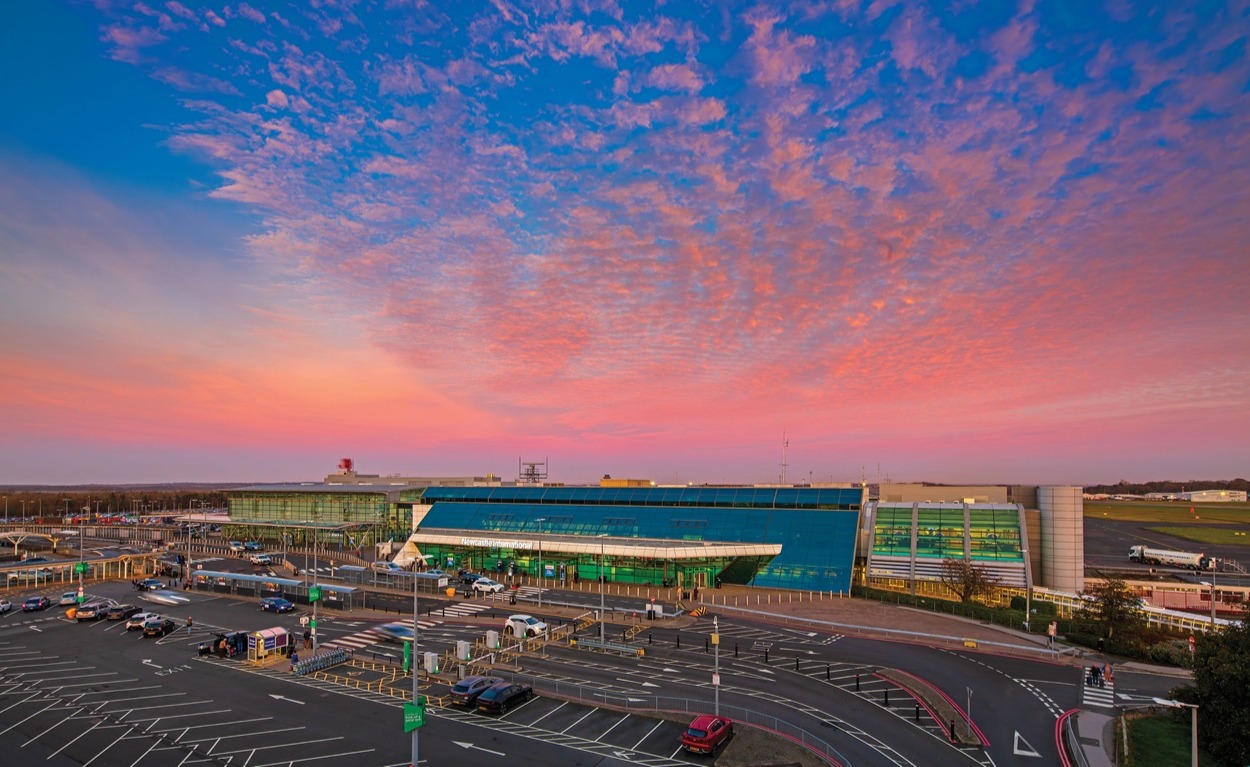IATA releases passenger and air freight figures for 2019
The global 2019 passengers result is a slowdown compared to 2018’s annual growth of 7.3% and marked the first year since the global financial crisis in 2009 with passenger demand below the long-term trend of around 5.5% annual growth. Full-year 2019 capacity climbed 3.4%, and the load factor rose 0.7 percentage point to a record high of 82.6%. The previous high was 81.9% set in 2018.
December 2019 RPKs increased 4.5% against the same month in 2018. That was an improvement over the 3.3% annual growth recorded in November, primarily due to solid demand in North America.
.jpg)
Courtesy IATA
“Airlines did well to maintain steady growth last year in the face of a number of challenges. A softer economic backdrop, weak global trade activity, and political and geopolitical tensions took their toll on demand. Astute capacity management and the effects of the 737 MAX grounding, contributed to another record load factor, helping the industry to manage through weaker demand and improving environmental performance,” said Alexandre de Juniac (above), IATA’s Director General and CEO.

International Passenger Markets
Twenty-nineteen international passenger traffic climbed 4.1% compared to 2018, down from 7.1% annual growth the year before. Capacity rose 3.0% and load factor edged up 0.8 percentage point to 82.0%.
• Asia-Pacific airlines’ full-year traffic increased 4.5% in 2019, which was a large decline compared to 8.5% growth in 2018. This reflected the impact of the US-China trade war as well as weakening business confidence and economic activity. Capacity rose 4.1%, and load factor ticked up 0.3 percentage point to 80.9%.
• European carriers saw a 4.4% traffic rise in 2019, which was down from 7.5% annual growth in 2018. Capacity rose 3.7% and load factor increased 0.6 percentage point to 85.6%, which was the highest for any region. The lowered results are attributable to generally slowing economic activity; declining business confidence, compounded by industrial disputes (strikes); Brexit uncertainty and the collapse of a number of airlines.
• Middle Eastern airlines’ passenger demand increased 2.6% last year, the slowest pace of expansion among all regions and down from 4.9% growth in 2018. However, demand began to recover in the fourth quarter and the monthly growth of 6.4% in December led all regions. Annual capacity climbed 0.1% and load factor surged 1.8 percentage points to 76.3%.
• North American airlines saw traffic growth slow to 3.9% last year, down from 5.0% in 2018, amid softer US economic activity and weaker business confidence compared to 2018. Capacity climbed 2.2%, and load factor strengthened 1.3 percentage points to 84.0%, second highest among the regions.
• Latin American airlines’ traffic climbed 3.0% in 2019, a dramatic slowdown compared to 7.5% annual growth in 2018. Capacity rose 1.6% and load factor increased by 1.1 percentage points to 82.9%. The year was impacted by social unrest and economic difficulties in a number of countries in the region.
• African airlines led all regions with a 5.0% demand increase, down from 6.3% growth recorded for 2018. Capacity rose 4.5%, and load factor edged up 0.3 percentage point to 71.3%. Airlines in the region benefitted from a generally supportive economic backdrop in 2019 as well as increases in air transport connectivity.
Domestic Passenger Markets

Domestic air travel climbed 4.5% in 2019, which was down from 7.8% in 2018. All markets showed annual growth, led by China and Russia. Capacity rose 4.1% and load factor was 83.7%, up 0.4% percentage point compared to 2018.
• China’s airlines saw domestic passenger traffic expand by 7.8% in 2019, the slowest pace since the global financial crisis. Softer economic activity amid the US-China trade war, compounded by weaker consumer spending and unrest in Hong Kong all contributed to the slowdown. Looking into early 2020, any positive impacts of the ‘phase one’ trade agreement with the US likely will be countered by the impact of the coronavirus outbreak.
• Indian airlines’ four years of double-digit demand growth came to a halt in 2019, as traffic rose 5.1%, down from 18.9% in 2018. The bankruptcy of Jet Airways and weakening economic activity were the main culprits of the slowdown.
Alexandre de Juniac said: “Twenty-nineteen was a difficult year for aviation and 2020 is off to a tragic and challenging beginning.
"The shooting down of PS 752 in January was inexcusable. Commercial aircraft are instruments of peace, not military targets. To honor the victims of this tragedy we must address this challenge with governments and stakeholders. Our thoughts are also with the injured, and the families of those who lost their lives, in the PC2193 accident in Turkey yesterday. Safety is the aviation industry’s number one priority and we are united in our desire to understand and learn from the circumstances of this tragedy.
"Today, headlines are also focused on the novel coronavirus. From our experience of past outbreaks, airlines have well-developed standards and best practices to keep travel safe. And airlines are assisting the World Health Organization (WHO) and public health authorities in efforts to contain the outbreak in line with the International Health Regulations. There currently is no advice from WHO to restrict travel or trade. But it is clear that demand has fallen on routes associated with China, and airlines are responding to this by cutting capacity for both domestic and international China. The situation is evolving fast, but we are observing significant schedules adjustments for February.”
Global air freight 2019
IATA's full-year 2019 data for global air freight markets showed that demand, measured in freight tonne kilometres (FTKs), fell by 3.3% compared to 2018 while capacity (AFTK) rose by 2.1%.
This was the first year of declining freight volumes since 2012 and the weakest performance since the global financial crisis in 2009 (when air freight markets contracted by 9.7%).
In the month of December, cargo volumes contracted 2.7% year-on-year while capacity rose 2.8%.
Air cargo’s performance in 2019 was dampened by weak growth in global trade of just 0.9%. The sector’s underperformance was also due in particular to slowing GDP growth in manufacturing-intensive economies. Softer business and consumer confidence, along with falling export orders, also contributed to air freight struggles.
There are signs that confidence and orders could pick up in 2020. It is too early to say what long-term effects will be seen from the impact of restrictions associated with combatting the coronavirus outbreak.
Alexandre de Juniac said: “Trade tensions are at the root of the worst year for air cargo since the end of the Global Financial Crisis in 2009. While these are easing, there is little relief in that good news as we are in unknown territory with respect to the eventual impact of the coronavirus on the global economy. With all the restrictions being put in place, it will certainly be a drag on economic growth. And, for sure, 2020 will be another challenging year for the air cargo business.”

Regional Performance
All markets except Africa suffered volume declines in 2019. Asia-Pacific retained the largest share of FTKs, at 34.6%. The share of freight traffic increased modestly for both North America and Europe, to 24.2% and 23.7%, respectively. Middle East carriers’ traffic share held steady at 13%. Africa and Latin America saw their shares lift marginally, to 1.8% and 2.8%.
• Asia-Pacific carriers in December posted a decrease in demand of 3.5% compared to the same period a year earlier. Capacity increased by 2.8%. The full-year 2019 saw volumes decline 5.7%, the largest decrease of any region, while capacity increased by 1.1%. As the world’s main manufacturing region, international trade tensions and the global growth slowdown weighed heavily on regional air freight volumes in 2019. Within-Asia FTKs were particularly affected (down 8% compared to a year ago).
• North American airlines saw volumes fall by 3.4% in December, while capacity grew by 2.1%. For 2019 in total, the region’s cargo volumes declined by 1.5%, compared to a capacity increase of 1.6%. Trade tensions and cooling US economic activity in the latter part of the year have been factors in the decline. The 5.6% fall in international year-on-year volumes in December was the weakest monthly growth outcome for the region since early 2016.
• European airlines experienced a 1.1% year-on-year decrease in freight demand in December, with a capacity rise of 4.9%. The fall in December was typical of the performance for 2019 as a whole, where volumes fell 1.8%, but capacity increased by 3.4%. Softer activity, including in the manufacturing-intensive German economy, combined with ongoing Brexit uncertainty, contributed to the 2019 result, which in international freight volume terms was the weakest since 2012.
• Middle Eastern carriers’ freight volumes decreased 3.4% year-on-year in December and capacity increased by just 1.9%, the lowest of any region. This contributed to an annual result of a decline in demand of 4.8% in 2019 – the second greatest decline in growth rate of all the regions. Annual capacity increased just 0.7%. Disruption to global supply chains and weak global trade, together with airline restructuring in the region, were the chief drivers of the weaker freight outcome.
• Latin American airlines suffered the sharpest fall in demand of any region in December, of 5.3%. The region was also the only one to see a reduction in capacity (-3.1%). Although the region was the second strongest performer across 2019 as a whole, limiting its decline in volumes to just 0.4%, social unrest and economic difficulties in several key countries led to the weakest international FTK outcome since 2015. Annual capacity increased 4.7%.
• African carriers’ saw freight demand increase by 10.3% in December 2019, compared to the same month in 2018. This was reflected in the strong 2019 full-year performance, which saw Africa freight volumes expand 7.4%. Capacity in December grew by 10% and for 2019 in total, increased by 13.3%. Over the year, air cargo volumes have been supported by strong capacity growth and investment linkages with Asia.












